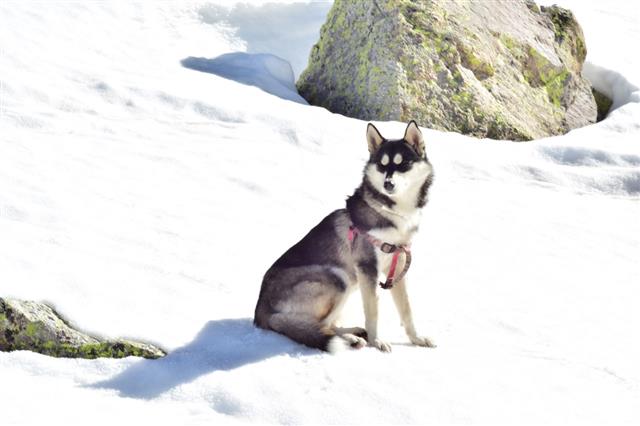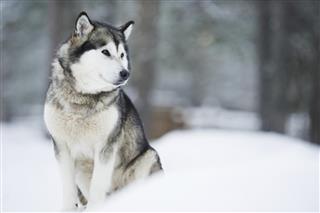
If you love dogs and are especially fond of huskies, you may have wondered what is the difference between an Alaskan husky and a Siberian husky. Here is all you need to know about what makes the two different from each other. After going through these differences, you can decide which of the two will be ideal for you.
Alaskan Husky
As mentioned before, the Alaskan husky is not a separate, distinct breed! There is no specific preference or restriction to its descent. This husky “type” is categorized solely by its purpose to humans, which is that of an excellent sled dog. Alaskan huskies can trace their ancestry from various other dog breeds, such as the Siberian Husky, Border Collie, Alaskan Malamute, German Shepherd, etc. They usually have brown, blue, or blue-brown eyes. Their coats are either short or mid length, thereby, not requiring intensive maintenance. The average lifespan of an Alaskan husky ranges between 12 – 15 years.
These dogs are actually very gentle and usually do well with other dogs since they are bred to work together,. However, they can be bothersome to other household pets, due to their predatory behavior. Also, huskies may not good in hot climates, as they have double coats and can easily overheat. These unbelievably strong dogs are generally playful, and friendly , as any dogs can be, though you may want to keep an eye on them as they can get easily bored if left alone and may become destructive if too bored. They need a job!
Siberian Husky
Siberian husky is a proper, distinct, and registered breed of working dogs that are primarily used for pulling sleds in the Northern tundra. The origins of this breed can be traced to Siberia and genetically, the Siberian husky belongs to the Spitz family of dogs. The biggest difference between the two is that Siberian huskies are shorter and stockier in terms of physique. They are used for both, work and show purposes. As opposed to this, Alaskan huskies are used strictly for work and dog sled racing purposes. Siberian huskies can have ice blue, dark blue, amber, or brown-colored eyes. The occurrence of heterochromia is quite common in Siberian huskies, which is characterized by one distinct color for each eye; say, one eye blue and the other amber!
The coat of a Siberian husky is very thick and long, so as to protect the dog from the harsh cold conditions of the Arctic region. Siberian huskies are very affectionate, and just like other dogs, their puppy-like playful behavior can last all their lives. This breed is very intelligent and is very good at learning commands fast. Bred for intelligence and hard work, Siberian huskies make good pets, but need lots of exercise and attention and love to be outside in the cold!
Difference between Siberian Husky and Alaskan Husky
| Points of Difference | Alaskan Husky | Siberian Husky |
| Breed Recognition | Not recognized as a breed | Recognized as a breed |
| Sole Purpose | Working dog, sled pulling, dog sled racing | Working dog, sled pulling, dog sled racing (short distances), show purpose |
| Registration with AKC, CKC | Not registered | Registered |
| Coat Length | Short to mid length | Long |
| Coat Thickness | Thick | Very Thick |
| Country of Origin | USA | Siberia |
| Genetic Family | Mixed | Spitz |
Both huskies are adorable and high-energy canines. If you are contemplating getting one of these, make sure you give it enough time, exercise, and access to open spaces. Think hard about getting a Siberian husky if you reside in a warm climate. They are not suited for this with their thick-coats and it may make them uncomfortable, even sick. Whichever dog you get, make sure to take very good care of it and spend quality time with it. After all the unconditional affection and loyalty it generously bestows upon you, that’s the least you can do for it!




























